Jumping jacks are a popular way to train your cardiovascular health. You can use these jumping jack variations to change up your workouts.
Jumping jacks are mostly a cardiovascular exercise that engages muscles like your shoulders, upper back, inner thighs, outer thighs, and calves.
The standard version can already offer many benefits but you may be interested in engaging different muscles or spicing up your workouts.
For both of these situations, there are many jumping jack variations that can help you out. These implement different a variety of different movements and sometimes extra fitness equipment.
These jumping jack variations are not always that much more effective for training your cardiovascular health and muscles but they can definitely make your workouts more fun.
1. Standard jumping jacks
Before going over both the easy and more complicated variations, it can be helpful to go over the standard version first. To do a jumping jack take the following steps:
- Stand up straight with your arms beside your body.
- Jump in the air and move your legs sideways and outward. Move your arms sideways and upward.
- Land with your feet wide apart and your arms pointing upward. You generally want to have your legs slightly bent so you can better deal with the impact of landing.
- Jump back into starting position.
If you are more of an exercise beginner, you may feel your muscles fatiguing. However, for most people, jumping jacks are a cardiovascular workout.

2. Modified jumping jacks
This first variation requires you to keep one foot in place and swing the other leg outward without putting it on the ground. Switch legs in the next repetition. Your arm movements are the same.
Modified jumping jacks will be a lot easier on your knees. The downside is that this type of jumping jacks is also a lot less challenging which generally means getting the exercise benefits to a lesser extent.
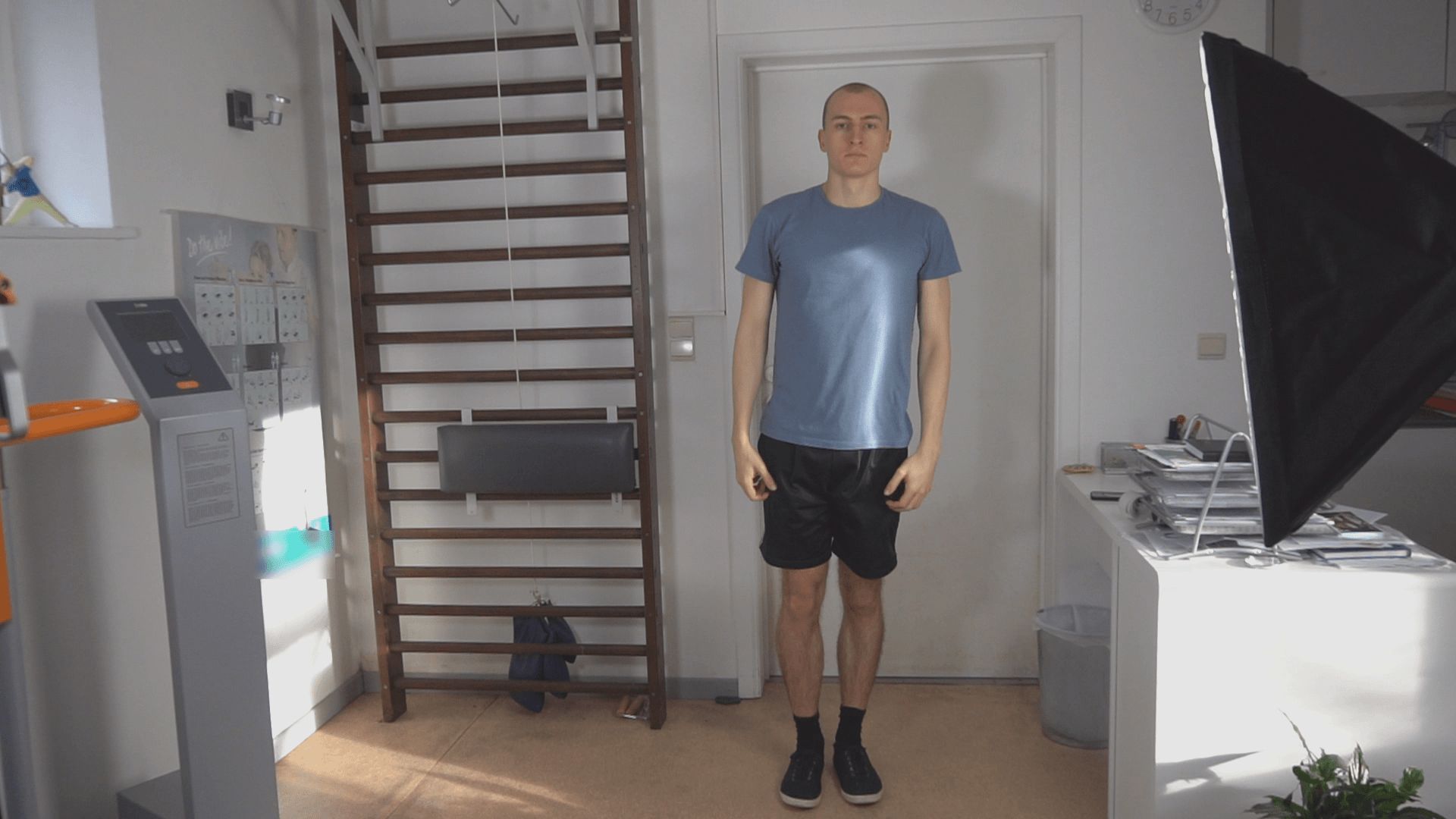
3. Step jacks
Step jacks, also known as walking jacks, take modified jumping jacks one step further. Literally, since the difference is that instead of only swinging your leg, you take a step sideways.
Again, the arm movements stay the same and you should alternate between what leg takes the step each repetition.
This variation is slightly harder than the modified one but still more of a beginner-friendly option.
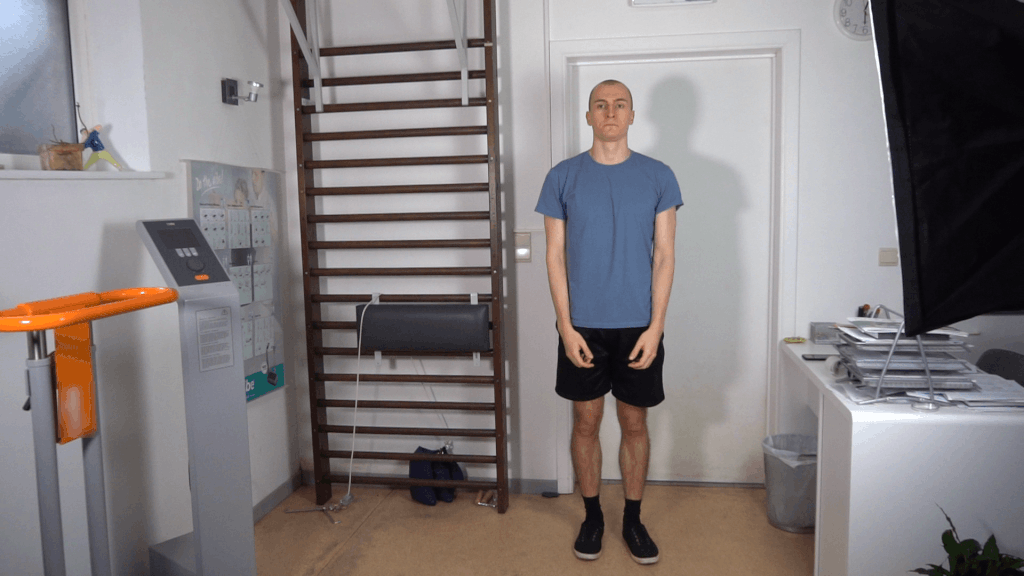
4. Press jacks
Instead of swinging your arms sideways and up, press jacks require you to push your hands upward. Make sure your elbows are not flared outward too much. Your leg movements stay the same.
Instead of engaging the side part of the deltoids (main shoulder muscle) like in regular jumping jacks, press jacks engage the front part of the deltoid muscles and your triceps (back of the upper arm).
To engage your muscles even more you can hold weights. You want to keep these on the lighter side since your movements are still relatively uncontrolled. Press jacks are still meant to be more of a cardiovascular exercise.
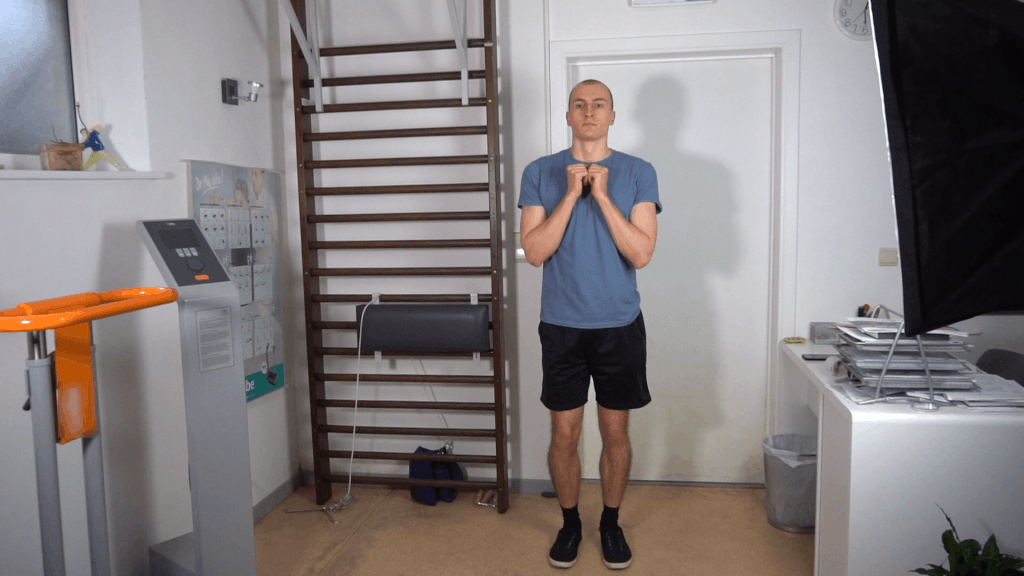
5. High knee jacks
As the name implies, this next variation requires you to do the high knees exercise movement while doing the jumping jack arm movement.
Initially, you can do high knee jacks at a slow pace. Once you and your shoulders are up for the challenge you can give higher speeds a try.
High knee jacks are not ideal for high speeds and a hard cardiovascular workout but you could use this exercise to warm up and improve balance and coordination.

6. Plank jacks
Plank jacks can be considered both a plank and jumping jack variation. For this exercise you start in plank position and jump with your legs similar to a jumping jack. Make sure you don’t lower your hips too much.
This type of jumping jack is more challenging for your core muscles, slightly less challenging on your inner and outer thigh muscles, and easier on your shoulder and back muscles.
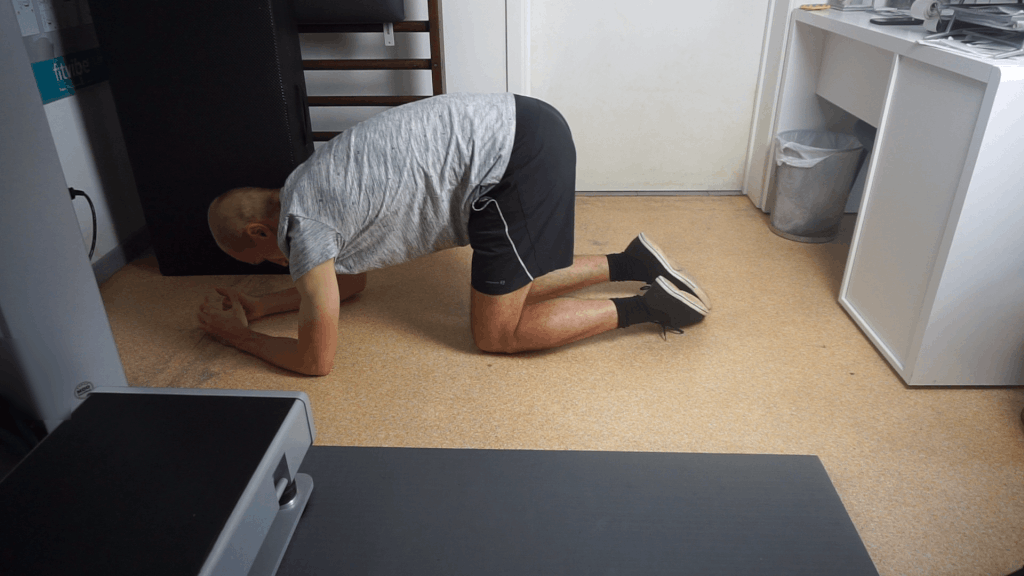
7. Plyo jacks
Plyo jacks, also known as star jumps, are an explosive version of the jumping jack where you move your arms and legs outward and inward in one jump.
The way you train your muscles influences what fitness component you improve. Regular jumping jacks at a slower pace will train either muscle endurance or muscle strength.
Plyo jacks can be a better alternative if you want to work on your muscle power fitness component.

8. Half jacks
Half jacks are simply the leg movements of a jumping jack while keeping your arms by your sides.
The effects of this are relatively straightforward. You will not really engage your shoulder and upper back muscles. Additionally, the exercise will become less challenging for your cardiovascular health.

9. Cross jacks
In this next exercise, you move your arms sideways horizontally instead of up. You also cross both your arms and legs instead of stopping in the middle.
This makes it so cross jacks focus more on your chest and back part of the deltoids (main shoulder muscle) and less on the side part of the deltoids.
Your inner and outer thigh muscles also have to go through a larger range of motion.
On the other hand, doing cross jacks at high speeds is relatively challenging. This variation is more suited for a warm-up or to improve coordination.

10. Split squat jacks
To do split squat jacks you start in the low split squat position.
That means both of your knees in 90-degree angles, one foot in front of your body and flat on the ground, the other foot behind you with only the front on the ground, and hips at about knee height.
After that, you push yourself up and jump in the air. The front leg will do most of the work. While in the air your legs switch position and arms raise sideways and upward like in regular jumping jacks.
Land with your legs slightly less than stretched and lower your hips so that you are in starting position but with the other foot forward and your arms stretched above your head. After that repeat the jump, leg switch, and bring your arms back down.
This variation will be a lot more challenging for leg muscles like your glutes, quadriceps, and calves. Up to the point that you can even grow and strengthen these muscles.
11. Seal jacks
This next exercise only makes a small adjustment in the regular jumping jack. Seal jacks require you to keep your arms horizontal and move them outward and inward. Your leg movements stay the same.
This variation engages your chest muscles and the back part of your deltoids (main shoulder muscle). In return, you don’t engage the side part of the deltoids and your upper back that much.

12. Jump rope jacks
As the name implies, you need a jump rope for this next exercise. Once you have that, to do jump rope jacks you jump rope but instead of just jumping up and down you implement the outward-inward leg movement of jumping jacks.
This adjustment is mostly more challenging when it comes to coordination. Additionally, it can be a fun way to switch up your workouts.
On the other hand, this variation can interfere with your cardiovascular workout if the rope hits your legs and stops turning. Besides that, you don’t get the same upper body training as regular jumping jacks.
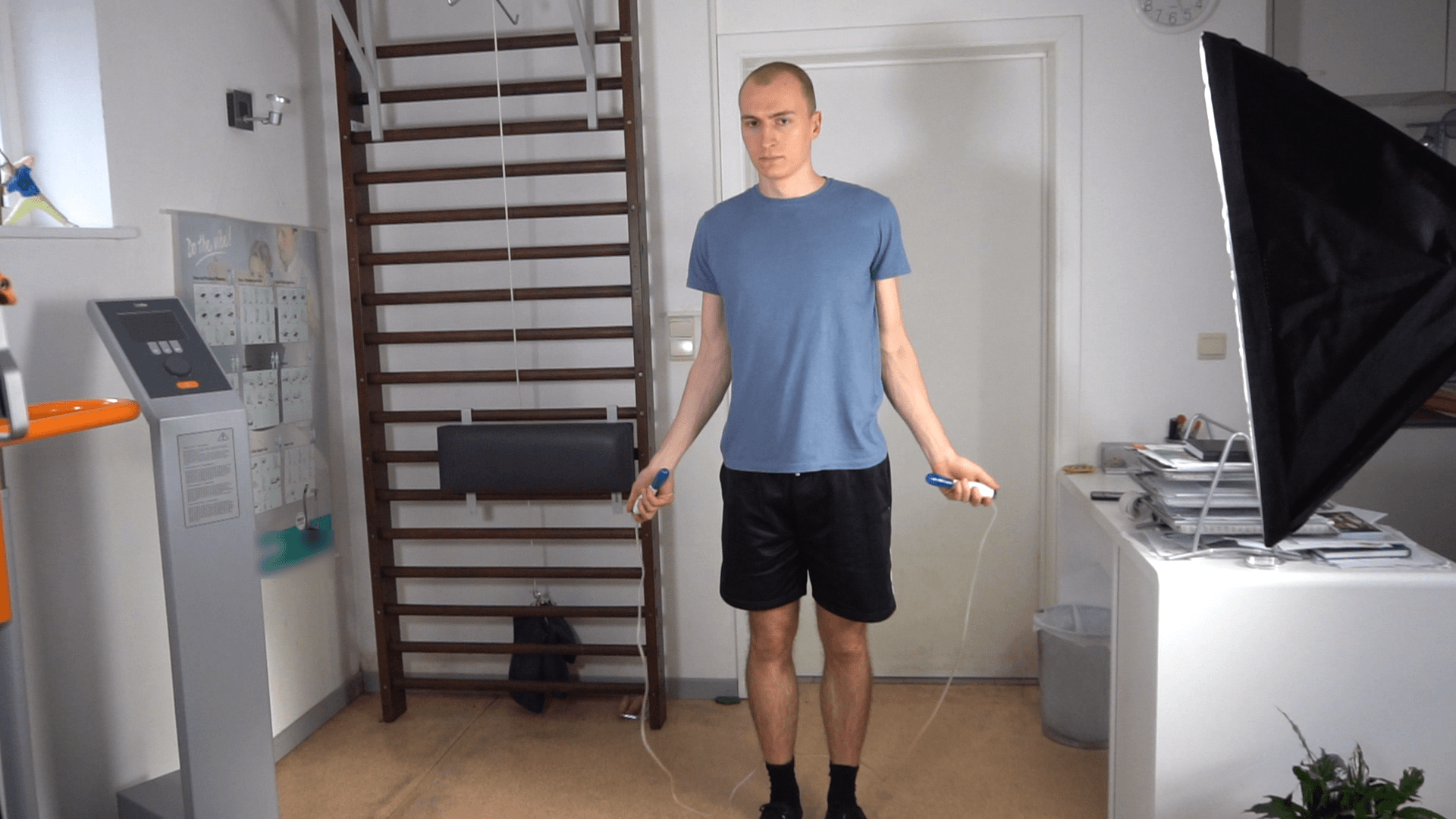
13. Pushup jacks
Pushup jacks combine the popular pushup exercise with the leg movement of jumping jacks. Make sure you keep your hips high enough, try not to go lower than a straight line from your shoulders to your feet.
Additionally, don’t flare your elbows outward too much.
Compared to jumping jacks, pushup jacks are a lot more challenging for your chest, tricep, and core muscles. The exercise is easier on your shoulder muscles and slightly easier on your inner and outer thigh muscles.
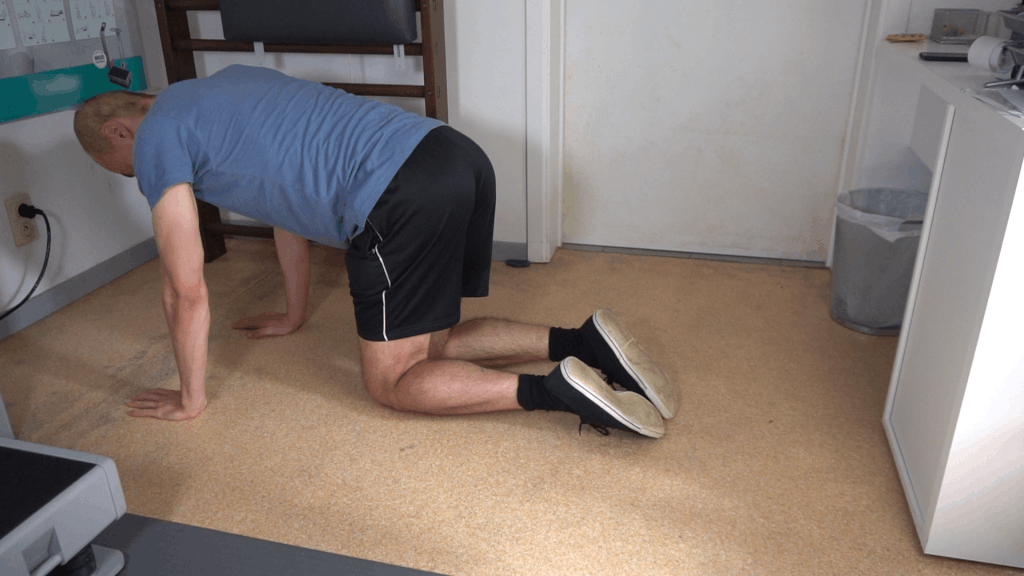
14. Skier jacks
For this next variation, you start with one foot slightly forward, the other foot slightly backward, and one arm pointing up in the air.
To do the exercise make a small jump. While in the air, move the back foot to the front and the front foot to the back. Additionally, move the arm in the air forward and downward, the other arm forward and upward.
Land in a position similar to starting position but with the other arm in the air and the other foot forward.
Instead of the side part of your deltoids (shoulder muscle), inner thigh, and outer thigh muscles, skier jacks engage the front part of the deltoids, hip flexors, and glutes more.
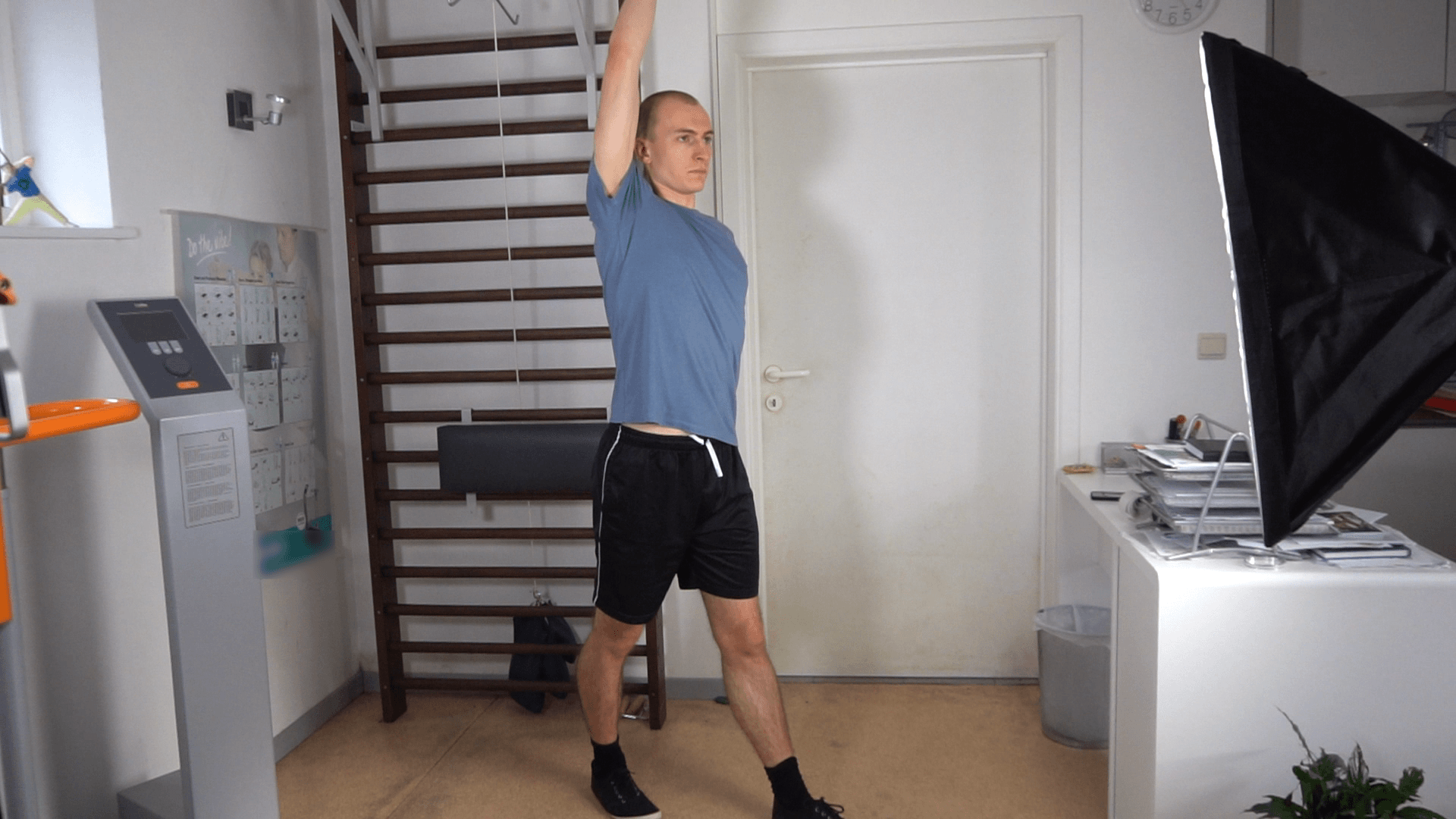
15. Squat jacks
There are different versions of squat jacks but for one of the more popular ones you keep your arm movements the same but land in a wide stance squat position.
This jumping jack variation will be more challenging for your glutes, quadriceps, and calves. Additionally, going at higher speeds will be more challenging to do.
That means squat jacks, also known as power jacks, become more of a light resistance training exercise with a good amount of cardiovascular engagement.

16. Burpee jacks
This next exercise is very similar to the burpee exercise but instead of jumping straight up, you do a jumping jack. You still keep the squat, plank kickback, and pushup.
Compared to jumping jacks, burpee jacks are more challenging for your core, chest, triceps, glutes, quadriceps, calves, and cardiovascular system.
17. Predator jacks
Predator jacks combine the squat jack leg movements with the seal jack arm movements.
In turn, this jumping jack variation focuses more on your chest, rear deltoids, glutes, quadriceps, and calves. And less on the side part of your deltoids and back muscles.
The movements of this exercise are also relatively challenging to do at high speeds.

18. Push jumping jacks
This next type of jumping jack uses the standard leg movements but requires you to push forward with your hands. If you can do it safely, you can hold some form of weight in your hands to make the exercise more challenging.
The difference in arm movements makes it so push jumping jacks focus more on the chest, triceps, biceps, and the back part of your deltoids (main shoulder muscle). Additionally, you engage the side part of your deltoids less.
19. Frog jacks
To do a frog jack you start in a squat position with your feet wider than shoulder width apart and your arms between your legs. After that, you jump up, bring your feet together, and land with your legs slightly less than stretched.
At the same time, move your arms forward and up so that they are stretched above your head when you land.
This jumping jack variation is more challenging on your glutes, quadriceps, calves, and the front part of your deltoids. Additionally, the side parts of your deltoids have to work less.
20. Lunge jacks
As the name implies, this next exercise combines in-place lunges with the arm movements of jumping jacks.
This makes the exercise harder on your glutes, quadriceps, and calves. Up to a point where you could potentially grow and strengthen these muscles a nice amount. Additionally, you train your balance and coordination a nice amount.
Lunge jacks are similar to split squat jacks but less explosively.
21. Side jacks
Side jacks look similar to step jacks but you only move one arm up at a time and you move this arm farther.
Due to the relatively slow pace you can achieve, side jacks are mostly good for warming up, dynamic upper back stretching, or improving coordination.

22. Band pull-apart jacks
For the next jumping jack variation you need a resistance band. The resistance band pull-apart is an exercise where you hold a resistance band in front of you with your arms horizontally.
After that, you bring your arms sideways and outward until they are in one straight line.
Band pull-apart jacks combine this exercise with the leg movement of jumping jacks. This can offer you a challenging rear deltoids workout while engaging your cardiovascular system a nice amount.
23. Running jacks
Running jacks combine running in place with the arm movements of jumping jacks. Depending on your running pace you may be able to do the arm movements in sync with your leg movements.
Even if you don’t try to do the arm movements at the same pace as your leg movements, they will likely interfere with the running in place. For optimal cardiovascular training, just going for a run will likely be better.
That being said, running jacks can be a different way to warm up if you want something different than regular jumping jacks.
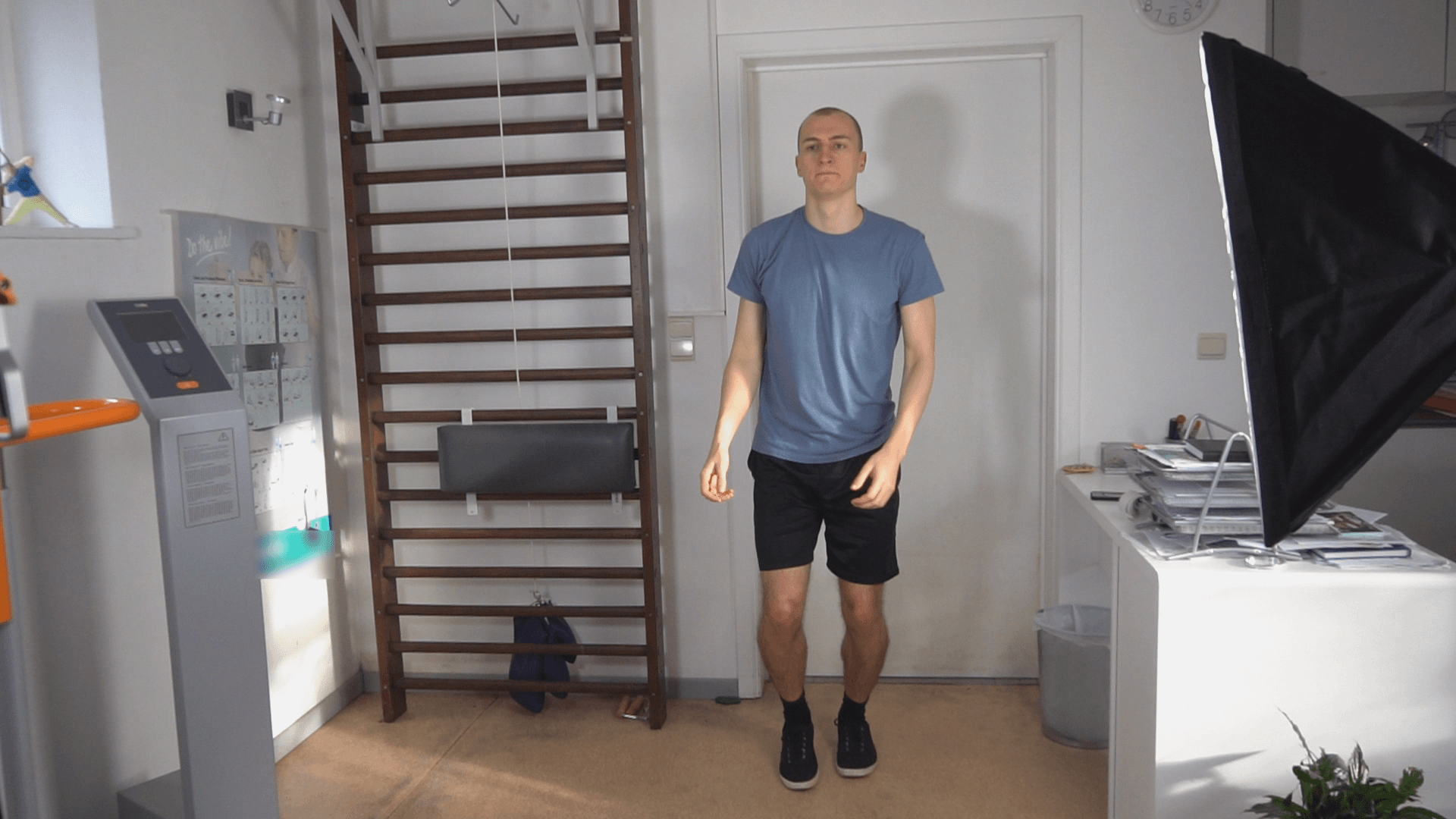
24. Oblique jacks
To do this next jumping jack variation, start standing up straight with your hands on the sides of your head. After that, raise one hip upward and the shoulder of that side downward. You can raise your knee too.
Next, right before landing with the foot again, start the same movement with your other side. Keep alternating between the sides.
As the name implies, oblique jacks are meant to engage your oblique core muscles. This happens to some extent but not in very significant amounts.
There are better exercise options for both training your obliques and cardiovascular health.
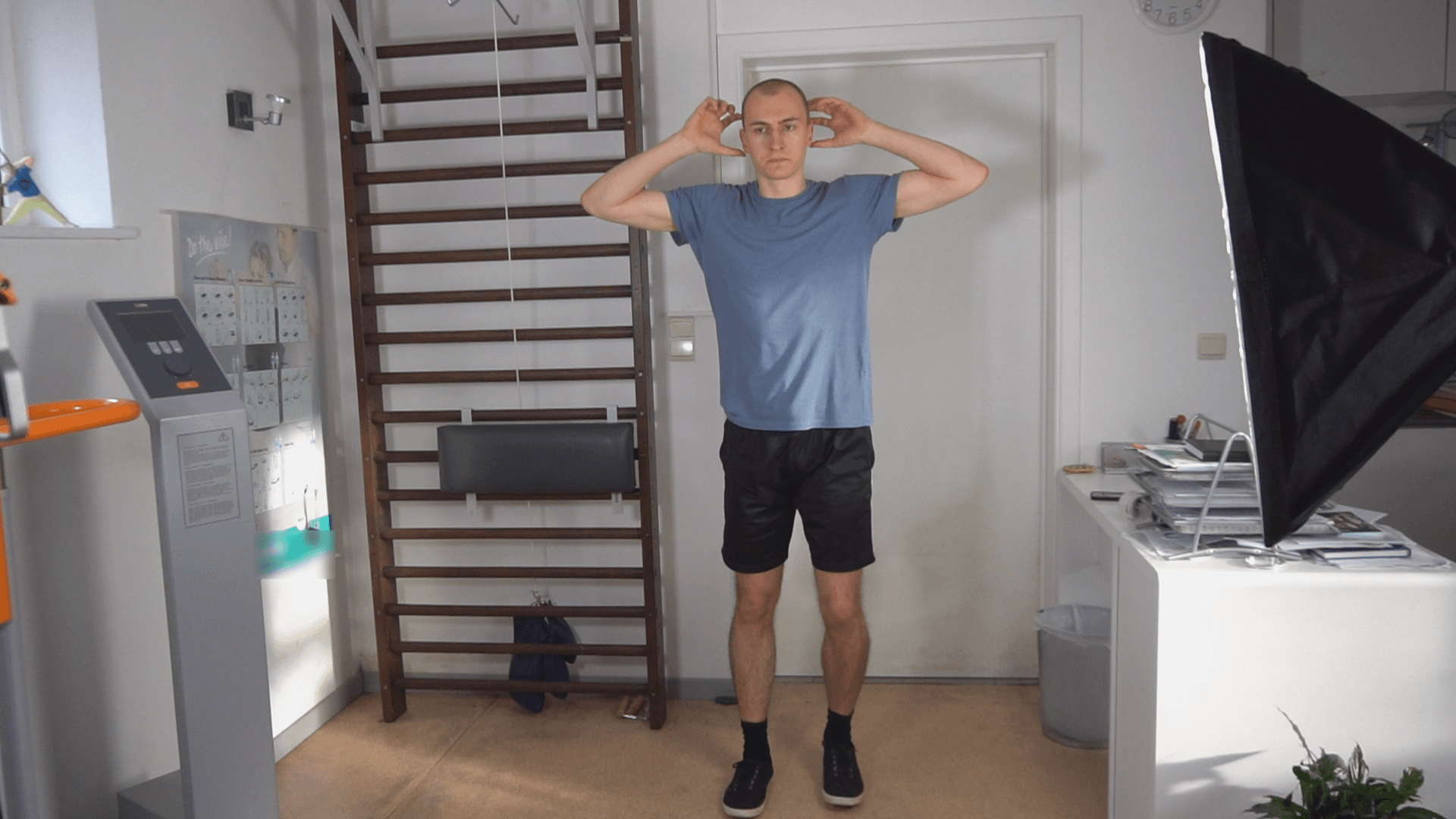
25. Twist jacks
To do twist jacks you jump with one foot forward and one foot back instead of sideways. Additionally, you keep your hands by your sides and rotate your upper body a small amount.
If you have any back pain you likely don’t want to do this exercise. Even if you don’t, you want to make sure you don’t twist too far. The small benefits of this exercise are likely not worth the risk for most people.
Twist jacks engage your oblique, hip flexor, and glute muscles more and shoulders, back, inner thigh, and outer thigh muscles less.

26. Pop jacks
For this next type of jumping jack, you start in a high plank position. Next, you jump forward with your feet and tilt your upper body back a small amount while staying in a squat position.
After that, you put your hands on the ground again and kick back your feet to get into starting position.
Compared to the regular version, pop jacks will be more challenging for your abs, obliques, lower back, erector spinae, hip flexors, and glutes. In return, your shoulders, inner thighs, and outer thighs don’t have to work as much.

27. Fingertip to toe jacks
To do a fingertip to toe jack you start standing up straight with your arms horizontal in one straight line. After that, raise one heel towards the hand of the other side and move that hand towards your foot so that they touch in the middle.
After that, move back towards starting position, and right before you reach this position, do a little jump and repeat the same movement with your other foot and hand.
This will engage your hamstrings and quadriceps slightly more but all the other jumping jack muscles less. Fingertip to toe jacks are more of a warm-up or coordination exercise.
28. Stance jacks
Stance jacks combine the squat jack leg movement with rotating your body and reaching down to the ground with one hand. After that, jump up so that you stand up straight with your arms above your head.
Repeat while touching the ground with your other hand.
This jumping jack variation will be more challenging for your glutes, quadriceps, calves, lower back, erector spinae, and oblique muscles.

29. Pencil jacks
For this last jumping jack variation you do a little jump between each repetition where you keep your legs slightly less than stretched and move your arms forward and upward. Bring your arms back down before you land.
Pencil jacks focus slightly more on the front part of the deltoids and calves. In turn, you also spend less time engaging the side part of the deltoids, inner thigh, and outer thigh muscles.
Additionally, it becomes a lot more awkward to do the exercise at higher speeds. This variation is more of a coordination exercise than anything else.
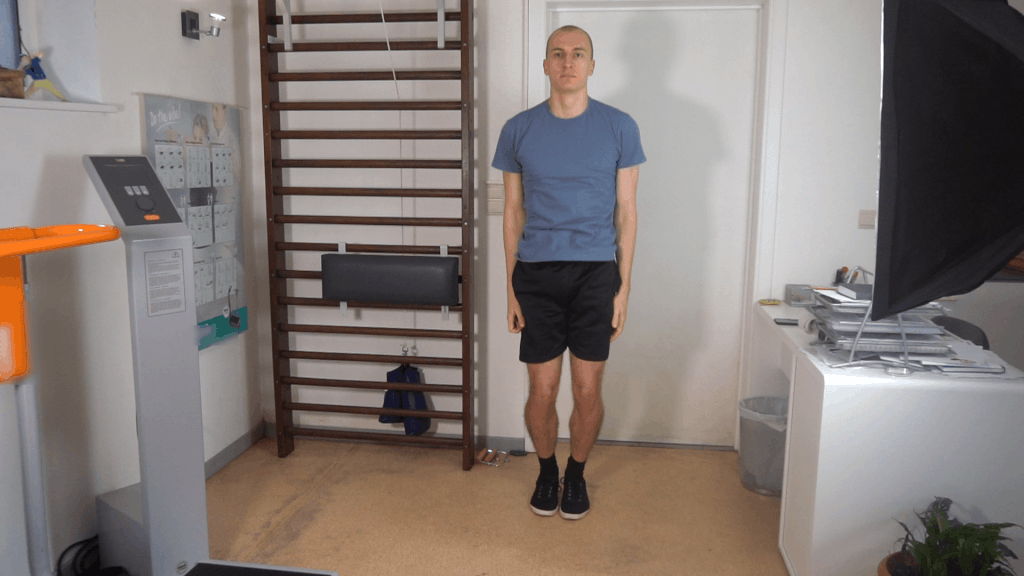
Related posts:
